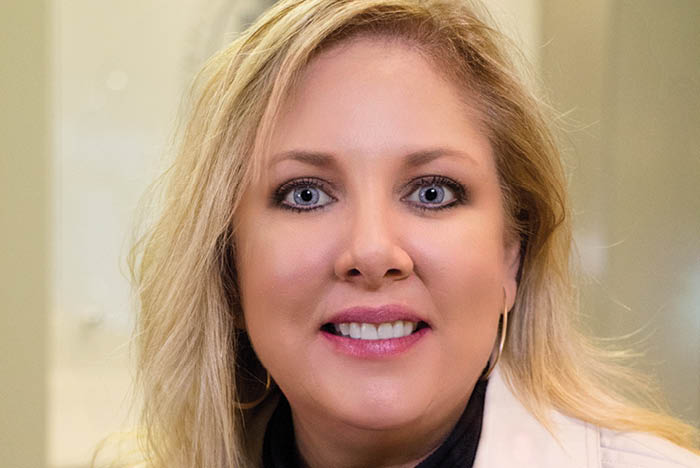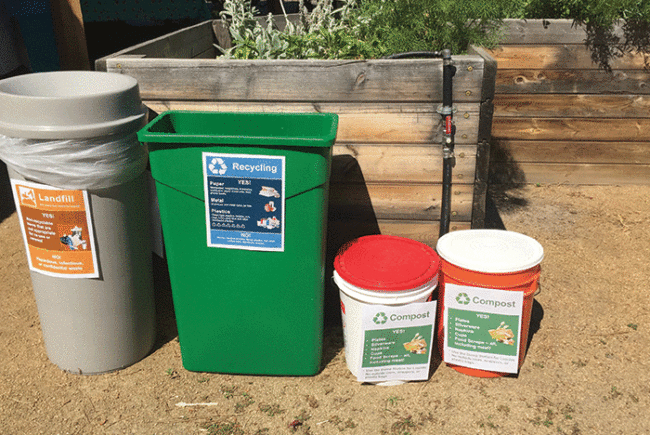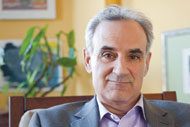
The Brooks File
CV
- Senior associate director of sustainability at ASHE, Chicago.
- Bachelor of Science in mechanical engineering at Colorado State University
- Sustainability program manager at ASHE2
- Account executive at Engineering Economics Inc., Golden, Colo.
- Project development manager at Iconergy Ltd., Denver.
Accomplishments
- National Academy of Medicine Action Collaborative for Decarbonizing the Health Care Sector — supply chain working group member.
- AHA sustainability agenda co-lead.
- LEED AP BD+C since 2009.
- Department of Energy, Better Buildings program health care steering committee member. ANSI/ASHRAE/ASHE SSPC 189.3 voting member. ANSI/ASHRAE SSPC 100 voting member. ANSI/ASHRAE SSPC 90.1 liaison. ASHE project lead for Centers for Disease Control and Prevention Project Firstline.
Education
- Master of Science in business management at Colorado State University.
- Bachelor of Science in mechanical engineering at Colorado State University.
Kara Brooks, MS, LEED AP BD+C, was recently promoted from sustainability program manager to senior associate director of sustainability at the American Society for Health Care Engineering (ASHE). This month, she talks with HFM about how the organization is helping to push the needle in environmental equity.
How has your role within ASHE evolved to meet changing needs?
Recent developments related to climate change, environmental sustainability and decarbonization, recognized both nationally and globally, have influenced the evolution and progression of my role. When I started at ASHE, our sustainability efforts were focused on reducing energy consumption. Since then, we have broadened our focus to include a more comprehensive environmental sustainability and decarbonization program.
As a professional membership group (PMG) of the American Hospital Association (AHA), ASHE’s expertise in this area has earned recognition across the AHA. It is noteworthy that the AHA recently published a three-year strategic plan guiding the work of the association. Within that plan, five strategic objectives or pillars were identified. The creation and execution of a sustainability agenda falls into the “Ensure the Financial Stability of Hospitals and Health Systems” pillar. This has directly impacted my work, as my role has expanded to work closely with the AHA policy team as well as the other PMGs in the development and implementation of that agenda. At this point, the AHA has not established a formal policy or advocacy position around decarbonization, but we are working to solidify the approach to that agenda and the development of tools and resources to support it.
What is ASHE doing to push sustainability among the health care C-suite?
The inclusion of a sustainability agenda as part of the AHA strategic plan has solidified the relationship between ASHE, the PMGs, and AHA’s policy and leadership teams. Central to the agenda will be assisting health care leaders in furthering their environmental sustainability goals. Implementing sustainability initiatives requires participation from individuals and departments throughout a health care organization, from senior leadership to front-line workers.
One goal of our sustainability initiative is to develop tools and resources that will create a framework for bringing teams together, from decision-makers to those who implement the decisions. Because sustainability and energy have traditionally fallen on the shoulders of the engineering staff, this also provides a unique opportunity to elevate ASHE members. We are beginning to create a series of targeted tools and resources intended to help health care organizations begin, continue or expand work related to environmental sustainability. These tools and resources will build from the great work ASHE has done, as well as incorporating resources from the other PMGs. Additionally, they will be created with the intended audience being members of the C-suite and hospital boards. A central focus of all these resources is to assist in “de-siloing” organizations.
What are the regulatory health care trends ASHE will be watching?
There are a lot of moving trends supporting regulations around environmental sustainability and decarbonization. The Biden administration has demonstrated strong interest in addressing climate change. The president has signed several executive orders making efforts around climate change a priority across federal agencies, including a requirement that all federal agencies factor climate change into their work. Health and Human Services Secretary Xavier Becerra also has launched the Office of Climate Change and Health Equity, which focuses on the disproportionate impact of climate change on the health of vulnerable communities and acting to close the gap.
Additionally, the Centers for Medicare & Medicaid Services is beginning to seek input from stakeholders such as the National Academy of Medicine (NAM) on issues pertaining to climate change and health equity. Further, NAM has launched an action collaborative focused on decarbonizing the U.S. health care sector. AHA was asked to join the NAM collaborative and has taken a significant leadership role. Because of ASHE’s subject matter expertise in this area, we work directly with AHA leadership supporting the NAM work. Furthermore, in response to the global and national interest in addressing climate change, we have seen growing trends to establish targets and goals around energy and carbon reduction at the state and local levels. Our advocacy team has a keen eye on all of these moving parts, and we are working directly with the AHA policy team to advocate for the needs of our members.
How is ASHE continuing to help health care facilities improve sustainable operations?
With the U.S. health care sector making up an estimated 10% of total carbon emissions in the country, ASHE has made sustainability a priority initiative. Health care facilities play an important role in reducing greenhouse gas emissions. Understanding the makeup of and ways to reduce greenhouse gases is essential to lessening the impact of the health care footprint on the environment. The sources of greenhouse gas emissions are typically broken into three scopes. Scope 1 emissions come from sources that are controlled or owned by an organization, including heating items that burn natural gas or any other fuel burned on-site; Scope 2 emissions are indirect emissions from purchased energy generated, such as electricity or steam; and Scope 3 emissions are indirect emissions from sources that the organization does not own or control. ASHE offers tools and resources that help facilities address the scopes, including 50 energy conservation measures (ECMs) on the Energy to Care website (energytocare.org). Additionally, ASHE’s Energy to Care Dashboard provides benchmarking and monitoring associated with the scope 1 and 2 emissions.
Ultimately, the decarbonization of the U.S. health care footprint will be an important and necessary step to mitigating the effects of climate change. ASHE supports the decarbonization of health care and is dedicated to leading the field by providing tools and resources to both reduce the health care carbon footprint and to inform public policy.
What new projects can we look forward to from ASHE and Energy to Care?
As our sustainability initiatives have grown, so has the Energy to Care Program. We recently added the ability to track carbon abatement and water use to the Energy to Care Dashboard tool. We also just added 10 new ECMs on the Energy to Care website that provide valuable actionable information about addressing environmental sustainability for facilities.
Finally, the Energy to Care awards celebrate facilities accomplishing sustainability goals. The program has been expanded to include sustainability metrics within the award criteria, including tracking energy and water consumption, as well as greenhouse gas emissions in the Energy to Care Dashboard. Additionally, award categories for the Sustainability Champion and Sustained Performance were added for the 2022 award year. ASHE’s sustainability work and the Energy to Care Program will continue to grow as we proactively address the global movement toward environmental sustainability.





